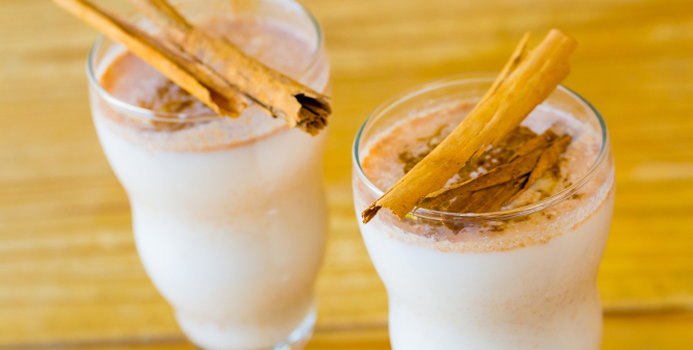The choice between cow's milk versus rice milk is likely to be a personal decision based on many factors. Milk has been one of those foods caught in a nutritional controversy. On one hand, it is an important source of calcium and vitamin D, essential for building strong bones and possibly for preventing obesity. However, many Americans are learning the benefits of following a plant-based diet and have shunned cow's milk in favor of alternatives, such as soy, grain, or nut-based milks.
Basic Information
Rice milk is processed from brown rice, which is pressed through a mill and then strained. Recipes for homemade rice milk are available online.
Calories and Fat
The calorie content of cow's milk varies based on the amount of fat in the milk. Usually, cow's milk is sold as whole, 2% reduced fat, 1% low-fat, or skim (non-fat) milk. For example, whole milk, which is about 3% milk fat, contains 150 calories per 8-ounce glass. Skim milk has about 90 calories per serving.
Rice milk contains about 120 calories per serving, depending upon the amount of sweetener added to the final product. The fat content of rice milk is very low--about 2 grams per serving. On the positive side, rice milk contains no cholesterol.
Protein
Regardless of the type of milk purchased, the protein in cow's milk remains constant at 8 grams per serving. Rice milk, because it is made from grain, is much lower in protein. Each 8-ounce glass contributing only 1 gram.
Carbohydrates
When rice milk is made, it contains some sweetness from the natural enzymatic process used to create the milk. After processing, rice milk is usually sweetened with rice syrup, evaporated cane juice, or another natural sweetener. Per serving, rice milk contains more carbohydrate than cow's milk: 25-30 grams versus 11 in regular milk.
The primary sugar that is missing from rice milk is lactose, making it beneficial for those who are lactose intolerant.
Vitamins and Minerals
The best known nutrient naturally found in cow's milk is calcium. Rice milk does not contain the mineral naturally, but commercial products are typically fortified. Even then, the amount present in cow's milk is significantly more than rice milk - 300 milligrams versus about 20 in the grain milk.
Both cow's milk and rice milk are generally fortified with other essential vitamins and minerals. Cow's milk, for example, is fortified with vitamin D, a nutrient necessary for the absorption of calcium. Rice milk usually has added vitamin B12 and iron, which are typically low in non-animal foods.
Other Factors
Rice milk is thinner and sweeter than cow's milk, so it cannot always be substituted in recipes calling for milk. Some products contain a thickening agent, such as carrageenan or tapioca, but it will still not likely make a thick, cream-like sauce for various recipes. Rice milk is best used in sweet foods, such as desserts.
Because it is low in protein and may not contain all of the nutrients needed by children, health experts warn that parents avoid substituting rice milk for cow's milk or baby formula for children under the age of two. For older children, rice milk can be used in a well-planned, nutritionally complete diet.



